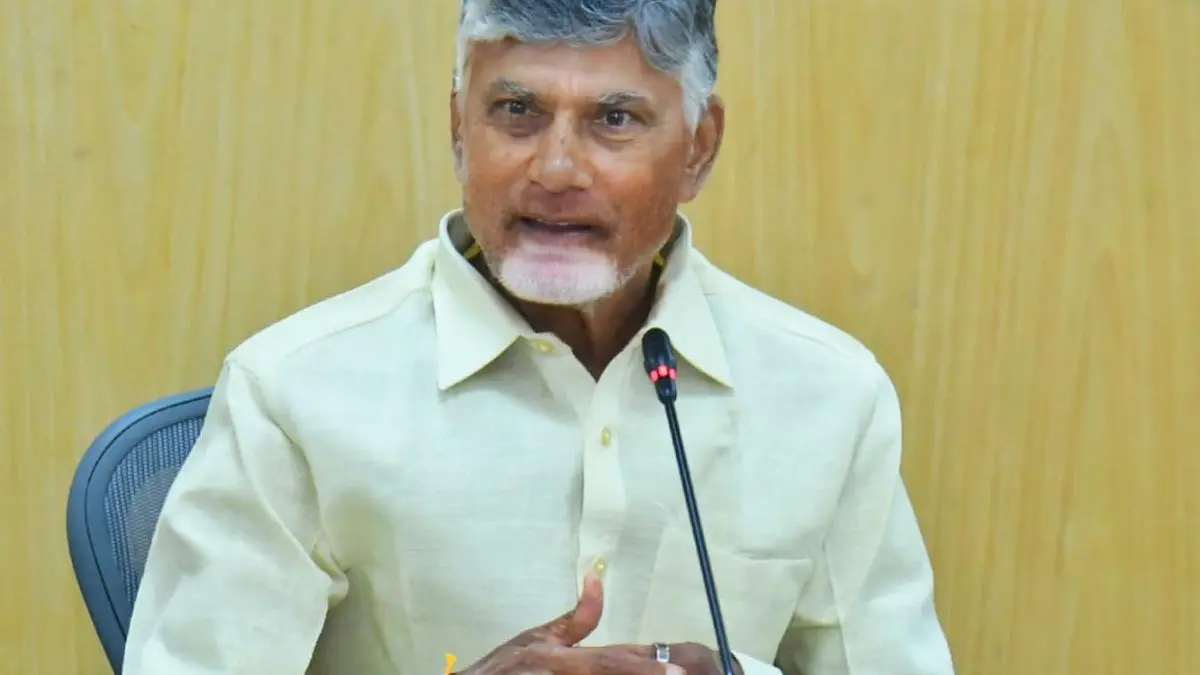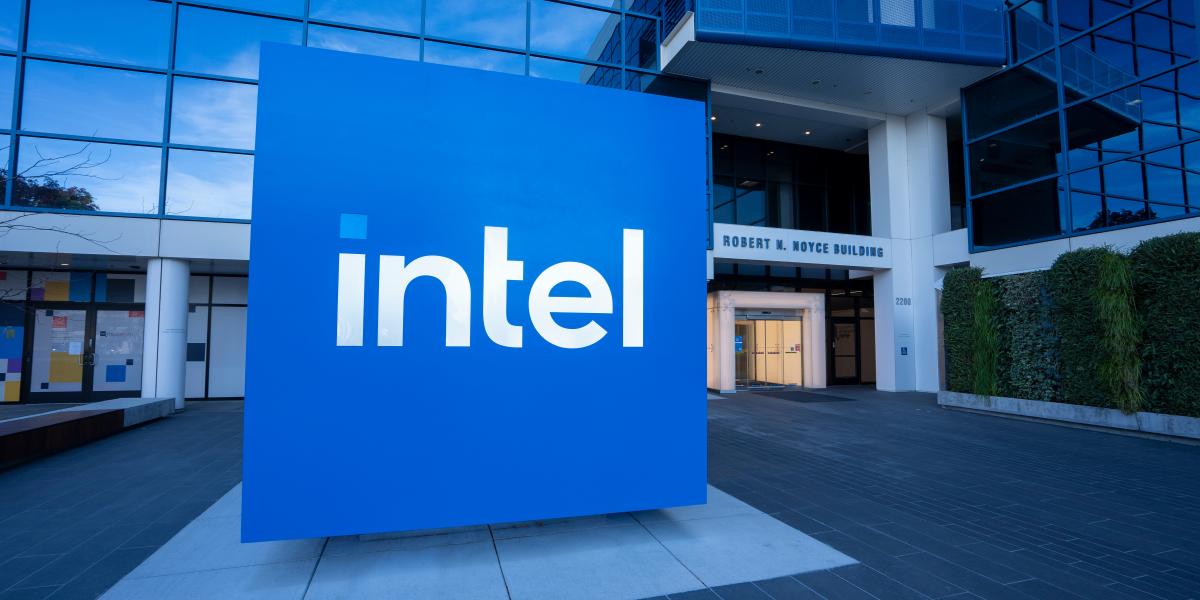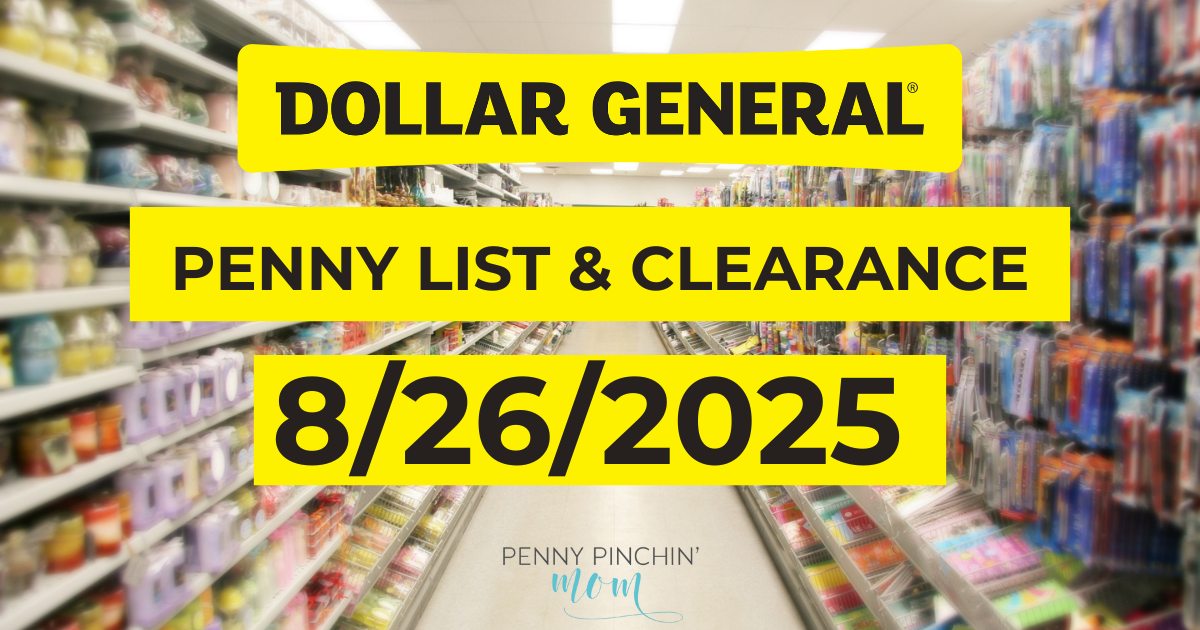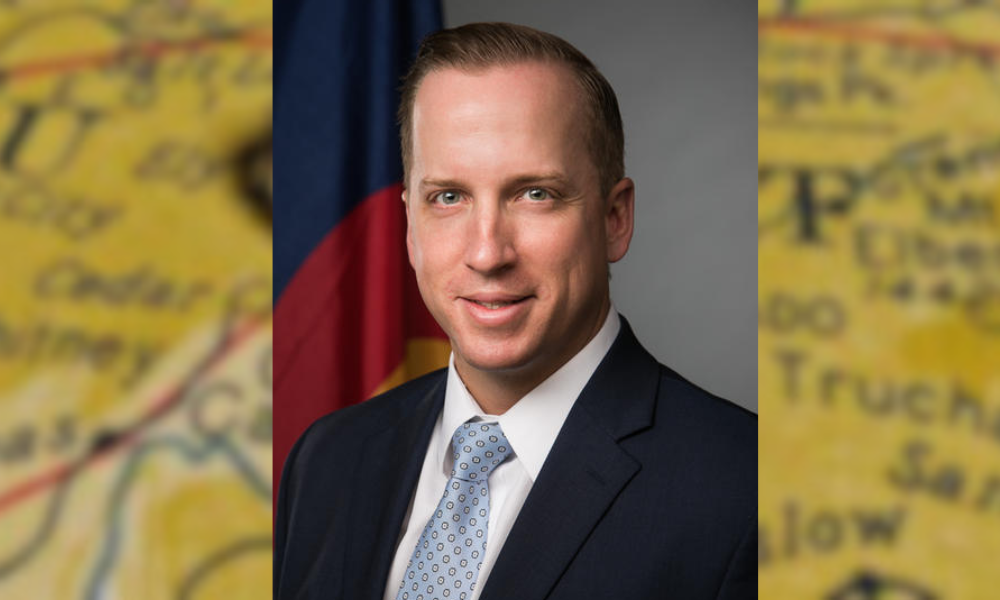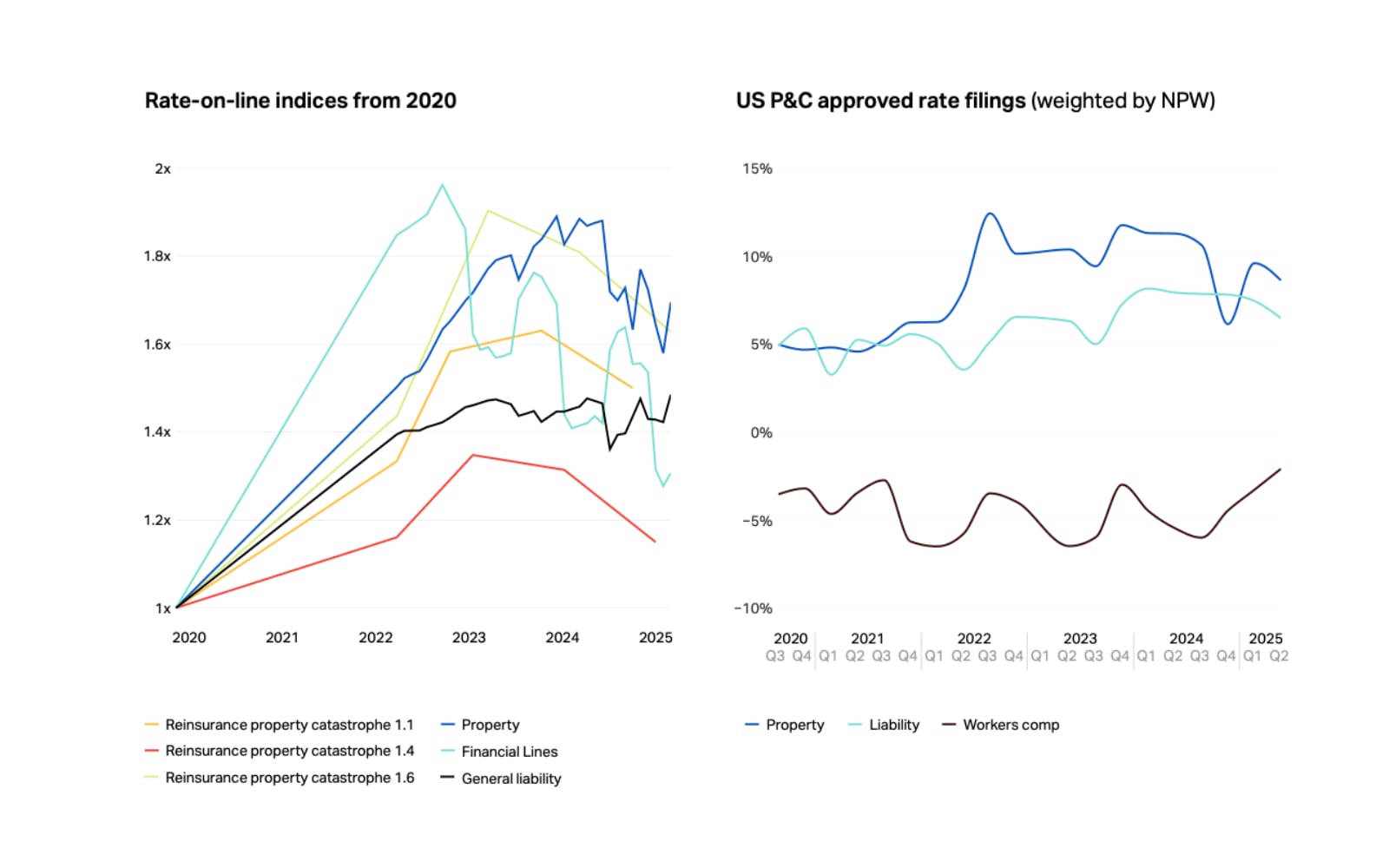Bank of America Corporation (NYSE:BAC) Barclays Global Financial Services Conference September 11, 2023 2:45 PM ET
Company Participants
Dean Athanasia – President, Regional Banking
Alastair Borthwick – CFO
Conference Call Participants
Jason Goldberg – Barclays
Jason Goldberg
As everyone takes the seat, we will put up the ARS question to ask everyone, we are going to ask take a bit of their time. Next up, very pleased to have Bank of America with us, from the company, Dean Athanasia, who runs Regional Banking; Alastair Borthwick, who is the Chief Financial Officer. And we want to focus most of the presentation today on Dean’s roles. But we fortunately have Alastair is here as well, who will join at the end to kind of get us up on some things.
But Dean, maybe just talk about your role. It’s been about eight months since Brian added your leadership, responsibilities for consumer (ph) business, by making you the leader of business and commercial banking. Obviously a big job. It’s one of the biggest consumer banks in the world as well as the largest commercial bank. Maybe just talk about one of the benefits to the company from the combination of these roles.
A – Dean Athanasia
Yeah. Well, just to explain a little bit, because. I think we’re organized a little bit differently, but I cover 100 markets — about 100 markets in the U.S. I have all the people in those markets that are covering them from consumer, small business, business banking and commercial banking, which runs up the clients all the way up to $2 billion. So, all the distribution that’s out there in the market, coordinating in the market, all the products and services that serve those groups. And then behind that, digital and marketing that help support the business.
So the synergies, if you go down through it and if you are looking at the market, one of the biggest ones we do is, we have in those markets concentrated on our clients, but the teams in those fields are working together. So having it all in one group and focused on working together, we’ve delivered over $5 million client referrals in those markets and the job of all those people is to deepen it, market by market by market. So looking at all those markets in the U.S., making sure we are serving all those clients and then trying to take share in all those markets, helping each other out.
And so that number, $5 million referrals, client referrals is up over 14% year-over-year. And we continue to invest in those markets and I am here to make it all work together and find synergies in between all those different groups.
Question-and-Answer Session
Q – Jason Goldberg
Maybe talk about just the biggest opportunities for Bank of America in consumer and commercial banking.
Dean Athanasia
Yeah. It’s different in each. Consumer Banking, the biggest opportunity for us right now, two-fold, one, we introduced ourselves and we have nine new markets that we’re in. So out of those hundreds, it was nine that we didn’t cover. So our model digital and financial centers together, putting it in those markets and then working with all the teams in the markets from commercial bank, all the way down. That’s a huge, huge opportunity for us in getting everything in between, investments and deposits and checking accounts, credit cards. It helps our growth engine, not only to deepen in those markets, but then entering these new and so we have our complete model going forward.
And then, in the commercial side, we’ve added over — acquired over 1,100 new clients this year so that machine is going. We have people in the market, but over the last three years, we put 40% in every market more RMs (ph) out into our market to interact with our clients, so we can accelerate the client acquisition engine. So that opportunity keeps paying dividends. And then behind that, just like we do in commercial, since I have digital as well, we are going to digitize the business bank, the commercial bank to a more heightened degree and find opportunities there, not only in terms of expenses and efficiencies, but being able to reach out and connect with our clients, deliver our portal and our cash pro across all our different client sets. So there is opportunities all the way through the entire client base.
Jason Goldberg
And then, maybe we could shift gears and just talk about the economic backdrop. This notion of soft lending appears becoming more consensus. From your seat, how healthy is the consumer, maybe talk about consumer spend, deposit balances, loan repayments, et cetera.
Dean Athanasia
Yeah. Consumer spend right now, I mean we — economists have pushed things out. So GDP, not seeing a downturn. Consumer spending has seen downturn out to 2025. So if you look at our economists, that’s what they’re looking at. So we – when, I look at the data in the consumer bank, I see our clients, it’s still holding versus pre-pandemic about 27% more cash in their accounts on average. It’s more acute. On the lower-end, they’re holding between 2,500 to 5,000 on average more cash in their accounts.
On the credit side, they’re still paying-off their credit cards. And I know what the last group said here, but for our group, in our specific client base, they are paying off at a higher rate than they ever have before. Still it’s pretty heightened, 4 percentage points higher than it was pre-COVID, so they’ve got that denote solid quality there and they’re spending at about a 5% clip. So, we see that maybe coming down a little bit, but they’re still spending at a pretty good clip and they’re sort of averaging down to where they were pre-COVID.
So in terms of consumer spending, that’s what we’re seeing. Again, this is across $64 million households out there and client base that we have. And so those are all the activities going up. They are in good shape and they’re angling down. They’re spending a little bit of it, but they still have on the lower-end probably two to three times more cash than they had pre-COVID.
Jason Goldberg
How long do you think that last?
Dean Athanasia
It’s a million-dollar question. We’re — we think it will last by the way looking at from the — sort of the economy, it’s a slow travel down on the consumer side. They’re bringing in more cash. There is plenty of jobs out there. Obviously, they’re dealing higher interest rates, but they’ve got higher wages. They still have a lot of job openings out there. They can find employment and the cash is still coming in. So, I would say, slow angling down, getting to more normalized period out into first quarter of 2024, but you’re just going back to where we were sort of pre-COVID where we had moderate 2%, 3% growth in deposits and things like that revert back into that type of economy.
Jason Goldberg
And then, I guess, maybe what are you hearing from company is, where do they watch it and where they’re most concerned about?
Dean Athanasia
Yeah. It’s different on the lower-end. They are much more optimistic than they were last year. They’re able to hire people. The supply chains are coming back in line. So they’re a little bit on the small-business and a little bit more optimistic. We get up towards the middle-market and the commercial side. They are a little bit more cautious right there. Anyone who has cash and has loans outstanding, they’re paying down their debt, they don’t want to pay the higher interest rates. So they are — you see those type of activities, they are not — the supplies have come. They don’t need to build-up on inventory anymore.
So there’s less barring up there. We see them pullback on their revolvers a little bit, maybe 2 percentage points on the upper-end on the sort of middle tier business banking type of client, probably more like double led, like 4 percentage points lower on the revolver. So they’re waiting — they’re in a wait-and-see mode and you see why they wait-and-see where things are going, if not making any — don’t do targeted investments, but they are not doing — they’re not stepping up and they’re not taking excess risk, they’re being a little bit more conscious.
Jason Goldberg
Brian talked about organic growth and some of your businesses have contributed to that. We’ve seen 18 consecutive quarters of net-new checking accounts, adding credit card accounts, record consumer investment accounts. Maybe talk to in terms of who you’re taking share from, what’s kind of driving these share gains?
Dean Athanasia
Yeah. When you go across the board and we’ve looked at as, we’re taking share across. Again, it’s market-by-market. We’re taking it across the spectrum from some of the smaller banks, mid-tier banks and upper banks, so it’s pretty consistent across the board. We like our model. Our model is we’re out there with our financial centers, our people and our financial centers. We are in the most key spots. We’ve renovated that group of financial centers. We have people on the ground in terms of our consumer team and our investment team.
But we also have — we know we compete against the fintech, so we’ve built-up the best fintech business in the world and the largest fintech business in the world are digital bank. So it’s those — that combination of things, we can go against some of the smaller markets within — smaller companies with this increased technology. We can send out the fintechs. We can get in front of our clients. We’re there with them every day. They connect with us over 1.2 billion times every month through the digital platform and the financial centers are there, if they need it, they want something more sophisticated or if they want to do planning.
So the combination of those two things allow us to beat some of the local banks and the regional banks, helps us compete with our peers, the bigger banks and they help us to ward off the fintechs and keep them away from our client base. So we say, we’re taking care across all those different groups across the board.
Jason Goldberg
[Technical Difficulty] commercial side, I think similarly, you’ve added I think [indiscernible] new clients in the first-half of the year growing IB share, GTS has obviously been strong. Maybe just talk about the investments you’ve made in those businesses and are you driving growth there?
Dean Athanasia
Yeah. I mentioned 40% more arms in the market. We’ve added investment bankers out in the middle market, drives 40% of our fee pool and our fee-based and investment banking. So we put — we’ve added 12 new markets where we have investment bankers partnering up with our middle, our commercial banking around. So that’s a huge investment for us and we should — we’ve got about 10% share and we think we can grow that quite handedly over the next year or so.
And then on top of the people aspect of it, digital, anything we can borrow from consumer and bring over like Erica and things like that, we are bringing over the entire platform. So our commercial and business clients use the system called cash pro, will make that a portal, 75% of our clients are digitally active on their portal. But we — again we are connecting with our commercial clients every single day through that portal, so we are putting all the products up there.
They can find anyone any one, anything they need in Bank of America, we could — we can interact with them. So, we’ve increased the speed and efficiency of that platform. And eventually there’ll be — we’ll keep investing in that platform. So anything that needs to be digitized, any documents, loan documents, anything across-the-board, we’re interacting with our clients. We’ve created this digital mechanism to drive more efficiency and interact with our clients more effectively.
On-top of that, all the payment mechanism, we added merchant banking and things like that. We can distribute to that platform. So we’ve got a pretty good connect point with our clients on both sides. And eventually you guys — if you’re Bank of America clients, you have the Bank of America app on the consumer side, you’re going to see the same exact integrated app on the corporate side for whoever the client is at the business, the Treasurer, the CFO, the CEO, they’ll be able to have that same type of capability on their side. So those are just huge investments we’re going to make over the next few years or so.
Jason Goldberg
So in both of your answers on the consumer side and the commercial side, you talked quite about digital technology and how you’re benefiting from that. How do some of these natural scale players compete against that?
Dean Athanasia
It is — it will be at the heart of our business model. I can tell you that. And I think it does create a huge barrier to entry for some of the smaller players and they try to compete locally in a different way. They try to add people. So again, that’s why we need people on-the-ground in those markets to compete against them. And then we had digital on-top of that. It gives us the one-two punch. It’s a pretty formidable process to go-forward. So, I mean, you’d have to ask those folks that come through, but we’re investing — as I said, we’re trying to build the biggest digital bank in the world and we’re going to continue to invest. It’s part of our strategy.
Right now, 52% of everything we do in the Consumer Bank is digital that should go up to 70% and was driving for that. And then on the corporate side, I talked about that, we have 75% digitally active and we’ll do more and make more investments on that side. Speed and efficiency, safety and security (ph) for our corporate clients. Now we’re making up payments, [Technical Difficulty] making those investments across-the-board and you’ll start to see some of that come out in the next year or so.
Jason Goldberg
Then maybe turning to what kind of the DHA (ph) data [Technical Difficulty] talk in terms of what you’re seeing with consumer commercial businesses?
Dean Athanasia
Yeah. It’s going to be a time back to the question you asked in the beginning. It’s going to be a different — little bit different story by each market. And so I’d explain it this way. On the corporate side, things have leveled out and now their deposits are starting to grow again on the upper-end and that — in our business side of things. On the wealth management space and the investment space and our wealthy clients, you see those have leveled off and they are sort of pretty consistent and staying where they are.
And then on the consumer side, you’re still seeing a little bit of the spend down. Again, they have all that excess cash is no — some of the rotation is through the system into investments and whatnot. We’ve captured a lot of that on the investment side, but they are still sort of slowly spending that level of cash down overtime and that’s sort of what we’re seeing. And we’ll see for the next — I think that same scenario will play out through the end of the year.
Jason Goldberg
And maybe can you just talk to the mix of non-interest bearing deposits in commercial, how low the interest-bearing deposits percent [Technical Difficulty]?
Dean Athanasia
Yeah. It’s about 42% non-interest bearing right now. I think if I compare that to 2019, that can be about — the level would be about 45%. Again obviously short-term fed funds rates in 3 times — three 3 higher now. So you can start to see it drives, say, around 42%, maybe go a bit lower and tick down a bit, but that’s right in-line sort of where we were pre-pandemic given all things being equal and actually better given where fed funds has been on.
Jason Goldberg
And then I guess one of the things that may surprise us when the biggest banks, in particular, Bank of America, it’s just how disciplined you guys have been on the consumer deposit pricing?
Dean Athanasia
Yeah.
Jason Goldberg
Given how much the Fed is high. Do you think this continue or at some point doing [Technical Difficulty] agile.
Dean Athanasia
Our strategy has been the same. We had never chased around short-term cash or whatever you want to call it. So we are always checking account focus. We brought in something like 300,000 net-new checking accounts in first half of the year, over cost of 500,000 investment accounts, but just core — our strategy is get the core operating accounts, bringing the checking accounts that will bring in sticky cash.
Again, I don’t — we don’t have an interest rate on our checking accounts. I don’t — there’s no rate paid there. And so, what we advise for clients who want higher rate, we put them in city so about and there is some wealth management. There’s about $100 million of our deposits are in sort of higher-priced types of products and — so CDs are a solution for them. We have all different types, depending on what the client wants and how long they want to stay in that particular vehicle. So we — that’s our model and that’s what we go through it. So I don’t see — I see our pricing discipline just staying right where it is and it’s always been that way through the up and down cycle. And we’ve been pretty true to it.
Jason Goldberg
Maybe turning to kind of the loan side of the balance sheet. Maybe just talk to consumer lending behaviors. What products are they using? Where — how elevated your credit card payment rates? Do you see those…
Dean Athanasia
Yeah. So we’re all consumers. So this is not going to be as shocking one that mortgage is obviously down. People are not moving out of their houses. They’ve locked in on rates. They refined in the past. So there is not — that acid pool is sort coming down and there is not — people are paying higher interest rates. So those have to get out into another one. There is not a lot of supply demand around that, is a diminished asset.
Auto loan is coming back strictly because I think supply is caught up, although some more expensive and particularly on the electric side, a little bit more expensive, but we see some modest growth there. HELOC is about sort of in-line and flattish. And then — so that leaves us with credit card and we still see credit card going pretty strong. It’s due to our consumer is catching up on experiences, taking a vacation, taking that extra trip on an airline, going overseas international travel, doing that expensive vacations.
So that asset continues to grow and it’s been one of the ones that have catered. So payment rates are still pretty strong, like I said, 4 percentage points above where we were pre-pandemic. So still clients are spending and they’re paying off their balances at a pretty good clip, at a normal clip, where they’re not getting themselves and not running themselves into our credit quality type of issue.
Jason Goldberg
I guess, and then on the commercial side, we have — we’ve seen growth slow, debate internally, is it supply-driven, banks are kind of pulling back, whether it’s Basel III or just kind of the loan losses going up or demand-driven, just people are borrowing less, given higher rates and strong economies. So I would love to hear your perspective?
Dean Athanasia
On our end is completely client-driven to be honest with you. And that’s across the board we see as I think I mentioned it before, sort of clients pulling back a little bit on their revolvers not borrowing as much and paying down debt and we still see that being cautious and so unless they have a better sort of a clearer picture of the year ahead and not making those investments that may before and they’ve leveled out on inventories. So they’re not — they don’t need to borrow of that. So we are ready. We are available. We’re still seeing some growth in different spots across the organization. But again, on average it’s down. It’s completely client-driven.
Jason Goldberg
And then, credit quality, we’ve seen credit delinquencies [indiscernible] towards ’19 levels. Where do you expect these will go and do you see any sign of deterioration on the consumer?
Dean Athanasia
Well, I mean. I would say — I would describe it this way. I would say 2019 was like a decades low in terms of loss rates. So if I’m — we’re still — so right now, we are still better than 2019. So I would say credit card loss rate will look like ’17, ’18, ’19, a little bit, but in that era, if you’re looking out forward. But as I said, clients got — they’ve got plenty of cash. They are paying off their credit cards have not seen any deterioration there. And so, credit quality on average is looking really good. And we will see where it takes us, but — and cash is still coming in the door. There’s still plenty of jobs available and they can find jobs. So there’s not — that would be the one that would sort deteriorate credit quality from here if you saw, job loss rate go up or unemployment go up and that’s — that would be the key as we look forward.
Jason Goldberg
And then I guess on the commercial side in areas of concern that you’re watching beyond [Multiple Speakers] office.
Dean Athanasia
Yeah. No, I mean, nothing that sticks out here and there clients, here and there, but in different industries across the board. So nothing there. I mean — and just for Korea’s 7% of our overall portfolio and then on offices probably about 25%, as we are talking about 2% of our overall portfolio. And then our — we’ve always been very, very [Technical Difficulty] trying the business to very — we’ve watched that particular area. So we’re in — 75% of our office space is integrated. So there’s nothing in there and no surprises that would come through from where we are standing up.
Jason Goldberg
And then earlier you’re talking about these investments you are making in digital. Just how do you balance constantly investing in the [Technical Difficulty] digital like keeping it growth and just delivering [Technical Difficulty]
Dean Athanasia
Yeah. I mean, the way we go, we are — everything is efficiency driven for our bank. So we have a huge process. We know we can spend on marketing, technology and the FTEs I talked about, but everything goes through our group. We look at for [Technical Difficulty] technology and digital for example, everything goes. So, we evaluate every single project that comes through. What’s the long term, what’s the short term that we deliver, what are we spending. We base it and measure it against other projects like how much. So it’s a very intense project.
What we’re trying to do is account for every single dollar that gets spent digitally and then we look across the bank, can that help other areas, can that benefit other areas. So every dollar that we spend we know we’re going to get the most out of it. We look at that portfolio every single month and we check what those projects are and making sure the dollars are being spent wisely.
And then after the project start, we do a postmortem and look back to get the revenue, we needed to cut the expense save we needed — it’s driving — maybe it’s credit quality or sort of some regulatory item that we wanted to automate, anything like that, we do a postmortem. So every single dollar gets evaluated. We did the same thing on the FTE side and the same thing on the marketing side. So, it’s a pretty intense kind of management process, all the way through, but it’s all to make sure we’re not just doing projects. We’re getting the most out of it and we’re not wasting any money if we’re going to invest.
Alastair Borthwick
Jason, the other thing and we talked about this, when we’re talking about priorities for capital. Technology is right at the very top of that, because it’s what fuels our growth and it’s fueling the expense saves and efficiency the teams talking about. So priority is part of it, so as when we talk about responsible growth, we talk about their four tenants. One of them is sustainability. And so, it’s for us now at this point after 10 years of this, we don’t walk in thinking this is a discretionary number. We are walking and thinking this is something we’re going to prioritize. It’s going to be flat to up a few percent every year. Even in pandemic, it was up. So we’re just constantly committed to that because it gets to the core of the operating model that Dean is describing and how he thinks about organic growth and serving the client.
Jason Goldberg
Alastair, now you have to mic, Dean filled some insights since the loan deposit beta trends for the regional bank. Hopefully, maybe you could broaden it out a bit for Bank of America as a whole.
Dean Athanasia
You had opened your mouth. Here you go.
Alastair Borthwick
No good deed goes unpunished.
Jason Goldberg
But I think we saw $14.3 billion of NII in 2Q. Back on the July call, you talked about $14.2 billion to $14.3 billion for 3Q.
Alastair Borthwick
Yeah.
Jason Goldberg
And $14 billion for Q4, that would get us up to more than 8% for the full year as that [Technical Difficulty]
Alastair Borthwick
Not really. I’d say, On the — for this quarter in particular, Dean just talked to the deposit side. If anything, the deposit side is more constructive for us at this point. Dean described the big three blocks of customers and some detail there so I won’t go into that, but our deposits are kind of flat-to-up. That’s just kind of where they are right now. That’s probably a little better than we thought. overall, and that’s — as Dean talked about, beginning to flatten out in consumer, flattening out in wealth and the growth in global banking. So, that’s been good.
No changes to our thoughts with respect to rotation between interest-bearing and noninterest bearing. Little changes in terms of the way we think about pricing, as Dean been talked about. So no change there. The loan growth is definitely slower. The growth we’re seeing as Dean described is in card. And that’s what we talked about that at quarter-end, but commercial side is definitely little slower right now, that is demand-driven. But otherwise, no changes to NII at this point. We’re good about that.
Jason Goldberg
All right. And then maybe overall expenses, we saw $16.2 billion in Q1, $16 billion in Q2. In July, you talked about continued decline in Q3, Q4. Any updated thoughts you want to quantify that? How you’re thinking about expenses?
Alastair Borthwick
Well, we quantified that at the time by saying we wanted to just keep going with that trajectory. We were looking for $15.8 billion this quarter, we’re looking for $15.6 billion next quarter. The key to that trajectory for headcount. And if we went back to January-February, we’re running head count at the time right around 218,000. We talked about the fact we wanted to end this quarter right around 213,000. I think we’re in good shape for that. That should set us up well for the $15.8 billion. Then we think we just got to keep grinding away the expense base in Q4. I still feel-good about $15.6 billion number. So no change there.
And if and when we do that, we can do that $16.2 billion, $16 billion, $15.8 billion, $15.6 billion, at that point that compares with $15.5 billion in Q4 of last year. So that’s the kind of discipline that we’re looking to get back to, but I think it sets us up well for the beginning of next year when we’ll start with 213,000 heads or fewer as compared to starting last year, 218,000. So that’s what we’re trying to do as a management team and we’re on-track for that.
Dean Athanasia
It doesn’t stop me if I am making sort of all the investments we talked about. We are finding efficiencies and we’re putting people in the market and making the digital investments. So if you put the two together, we’ve got to do — we’ve got to make those investments and get to where Alastair is talking about is a net overall position.
Jason Goldberg
And then no good deed goes unpunished, but eight straight quarters [Technical Difficulty] leveraged, is it realistic of the next several quarters for that to continue given the tough NII comps we’ll see?
Alastair Borthwick
It’s going to be harder, no question. I think that’s why we’re so focused on expense discipline, part of the equation. At the same time, we’re pretty good at this pre-pandemic. We had five years and a relevant. We’ve done a pretty good job over the course of the past couple of years because we’ve now got eight quarters in a row with that. So we haven’t given up the fight. The key will be for us is, as Jim just talked about, we got two things at once. We got to drive the organic growth and so-far as we can and we’ve got to maintain the expense discipline. So it’s probably too early for us to tell, but we know what we’re trying to do over the course of next year.
Jason Goldberg
And then, guess what, just any thoughts on trading, investment banking, federal [Technical Difficulty]
Alastair Borthwick
Well, the big two drivers in any given quarter will be the markets in the trading piece. I’d say around investment banking, the fee pool is down probably 30% — 35% right now, pretty significantly down year-over-year. We’re not — I think we’ll do slightly better than that, but that’s still puts the investment banking fees, which are probably right around $1 billion mark. Around the global markets, there’s always a little bit of third-quarter seasonality as compared to second. So it’s probably easiest just to compare us to last year and I think will be up post just last year in the single-digits, sort of low-single digits type number in-markets, just based on our current run-rate. That remains a reasonably constructive environment generally. But look, all digits compared with year-over-year.
Jason Goldberg
And then [Technical Difficulty] as audience response that and, I guess, Alastair, I’ll ask you to talk broadly and maybe Dean, we could talk about your businesses separately, but module three again is obviously getting a lot of attention. I’d love to kind of get your thoughts of Bank of America as a whole, maybe size of RWA [Technical Difficulty] mitigating actions? Any updated thoughts with regards to all actions [Technical Difficulty]?
Alastair Borthwick
[Technical Difficulty] they’ve already done it. Okay, so actually, I mean, this is a reasonable understanding of where we think that come out here. We’ve seen the popular press, say, the big G-SIB banks to be up about 20% or so. And we think that’s a reasonable starting point for the mix of our business. Now that, of course, assumes that there is no changes to the current rules. And I think — I’ll come back to that at the end, but there’s obviously a reason to hope there may be changes to the current ones, but let’s just use 20% for a moment because I think it’s an okay place to start.
If you took our Q2 RWAs and just close to up by 20%, you’re going to get to a number like $1.95 trillion. I would imply we’re going to need $195 billion of CET1. And we ended Q2 at $190 billion. So it gives you an idea of our gap. And we’ve been — we’ve been adding pretty significant clip of CET1 each quarter. So we should be able to get there in a quarter or two. At that point, then the rest of the challenge is just growing to build the buffer. Everyone overtime and just support the growth over-time and just support the growth and dividend buy-back the shares. We got five years to do that. So, I think we’ll have plenty of flexibility once we get through the course of the next quarter or two just build the capital we want, then we get to the point where we’ve got a lot of flexibility and we didn’t just go through our usual priorities for how we think about setting up the balance sheet.
Jason Goldberg
So a lot on that. So maybe buyback on-hold for the back-half of this year and then kind of we think it next years to you get to where you want to be?
Alastair Borthwick
We said in Q2 that we were going to prioritize right now just on capital because we wanted to see the final rules come out and then we wanted to see how this may all impact. I think based on where we are, we may have a little more flexibility there as we go into the fourth-quarter and as we get into next year, but we [Technical Difficulty] through finalizing some of the stuff. And we’ll give an updated earnings on how we’re thinking of that.
Jason Goldberg
And your responses sounded a touch, hopeful there may be some changes in this proposal [Technical Difficulty] where you see the greatest possibility of getting [indiscernible].
Alastair Borthwick
Yeah. Look, I think there’s going to be some important points of advocacy on the part of industry. And by businesses in America, we’re the ones who ultimately going to pay for this. First, I mean, we’ve talked about this before, but there is a significant amount double cap in the markets trading RWAs and in the operational risk RWAs, at least it sets up relative to the stress capital buffer test. So, that’s a significant point of the difference I suppose in point of view. So we’ll see how that goes.
I’d say third — those are two, third would be G-SIB inflation. Now, that’s one of those things where it was always anticipated that along the way, Basel III end game we might have a place where the G-SIB numbers stop inflating based on nominal and start to be adjusted for the size of the economy, that would be meaningful. That’s a meaningful thing to the very large banks. And at some point, it’s appropriate that that finished. Around some of the things like equity investments, if you think about what’s going on with tax equity and the ESG investments, in many places people are trying to incentivize those investments and yet this by being 400% risk-weighted assets, we change that total.
So there’ll be a variety of things that have to get worked through and I’m sure we’re going to come out in the comment period. And we’re hopeful that some of this will come down and in our favor, but if not, I think we’re in a place where our capital is in a pretty good position and it’s just about managing it over the course of the next five years. And then, of course, we get to optimize the balance sheet as well. We’ll think about how we reprice everything and we will think about the composition of our balance sheet. So we’ll have a lot of levers and we’ve got a lot of time, but the important thing I think is we have the capital that we need.
Jason Goldberg
Yeah. Good. I guess, Dean could be a business guy here. So I would love to get your perspective, right. You’re running a business, from your perspective, any positive or negative surprises from Basel III endgame? And then are there any activities or areas you could see changing some pullback? And then any opportunities to mitigate some of that RWA inflation? I know lot of the senior business, they got to think some of it is, just how you think about that?
Dean Athanasia
Yeah. Product, I think we’re still left of the product by products. We will look after and we’ll evaluate, so mortgage has a higher RWA to it. So we’ll do some pricing actions. We have to take. We have to look at balance sheet loans. We have to look at the appropriate. We have to evaluate that at a different higher capital level, unused credit card lines, other one is a capital charge there, so how does that impact our strategy, where do we go. We have clients that sort of borrow in the whole balances. We have others that just transact.
So that activity will be more costly from a capital standpoint. So we’ll adjust that as well. But it’s very — fairly change in there. There is sort of we don’t sit still. There is an action to help mitigate it, reposition our balance sheet and we’ll do it. Product is something that the macro, again that Alas just talked about, but product-by-product, we’re looking at that evaluating it and just taking actions whether this sort of pricing and repricing actions or just the level of pure activity. If we can offset where we put capital and put it into more useful spots and more beneficial spots for our consumers will do that. So we constantly change and look to offset and mitigate as much as possible.
Jason Goldberg
All right. We’ve got five minutes on the clock. We’ll see if there is any questions from the audience.
Unidentified Participant
Hi, Dean. Questions for you.
Dean Athanasia
Sure.
Unidentified Participant
You mentioned earlier your ambitions to increase the digital nature of your bank especially both on the commercial and retail side. And you gave some ways you’re going to do that. Can you talk about a bill payment in particular? It sounds like you’re going to hold that comment. What you anticipate doing in terms of creating more sticky small business user base by having integrated into your banking network?
Dean Athanasia
Yeah. So fully integrated starts with our portal and small business. It’s BA360 (ph) and we have cash on sort of upper end, so that portal will be expanded to include everything, all of our merchant products and services, which we just brought into the bank. That product will be integrated into our core operating accounts. So if you think of a small business has an account, everything will be integrated around that account and everything built into it, bill pay, everything we positioned, we set clients, so they can choose [Technical Difficulty] feel the core so they just want to completely do it themselves.
They should be able to come in and do a completely digital from start to finish, open an account, operating and accounts, get approval, transact, borrow, invest, could be at the 401(k) side as well, which will be integrated in there. So that is the general plan moving forward. We’ve done that on the consumer side and we’re just bringing that same mentality over on the business side just — and we’re borrowing as much as we can from a technology perspective, just huge upside, right?
And think of it, yeah, it’s great to have relationship managers out in the field and they interact with our clients. They go visit them, but there’s nothing like interacting with your client every day through a portal and making sure you’re delivering our message, making sure you’re delivering advice and anything else they need because we see what they’re doing, how they transact. So any way we can be helpful. We’re right there in front of them every single — and daily. It’s not quarterly or monthly, whatever, it’s every single day. That just gives us much more opportunity to build the relationship, grow relationships and grow revenue.
Jason Goldberg
One more.
Unidentified Participant
This is for Alastair. It seems that the market is very focused on held-to-maturity losses and relative to tangible book, it’s a big number. I thought it’d be great to hear how you think about it? And then also when it might turn into a tailwind as that begins to mature?
Alastair Borthwick
Yeah. So, I am answering in that sequence. So first, but it’s obviously not a capital issue. It’s also not a liquidity issue for us. It hasn’t been an earnings issue either. And so far as we got to a point pre-pandemic where we had a trillion one of excess of deposits over loans. We got to invest in somewhere. And we made a determination to invest some of those in long-term fixed and the rest in short-term and floating and we put that out every quarter so you can see that.
You can also see over the course of time then how the interest received and the rate received on that has gone up over the course of time as compared to the price that we pay on deposits. And that in turn has really helped to increase our NII. So we were $9 billion in the core banking book prior to — that at the low. Today, we’re at $14 billion-plus. So we’ve added $5 billion in NII per quarter. $20 billion a year [Technical Difficulty] that. That would be a big number, right, because it’s not just one thing on our balance sheet. It’s everything.
And yet, in terms of how I think about it in terms of tailwind, it’s already a tailwind. So business, the week where we get pay-downs. We get paid downs every month from those securities. And each time, we’re taking them off, we are just sweeping them into cash at some point. We’ll put those into longer-dated investments. We put them into loans right now [Technical Difficulty] That’s always going to be our first choice but we’re sweeping them into cash.
So they’re coming off the books at a low coupon. We are going spread on the books at a much higher coupon and obviously, we will take the benefit of that every month since we pay down every quarter to pay-down and we’ll continue to keep everybody updated with that progress over time.
Jason Goldberg
Great. Perfect. With that please join me in thanking Alastair and Dean for their time today.
Dean Athanasia
Thank you.
Alastair Borthwick
Thank you.









